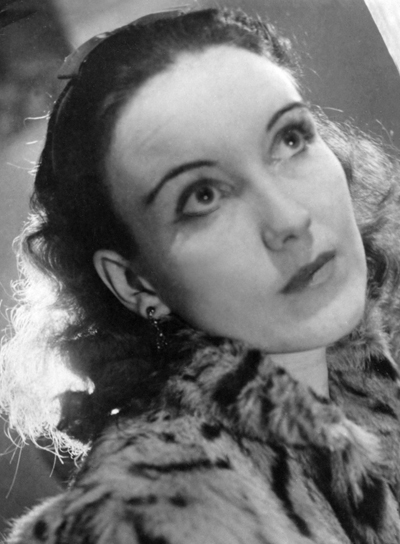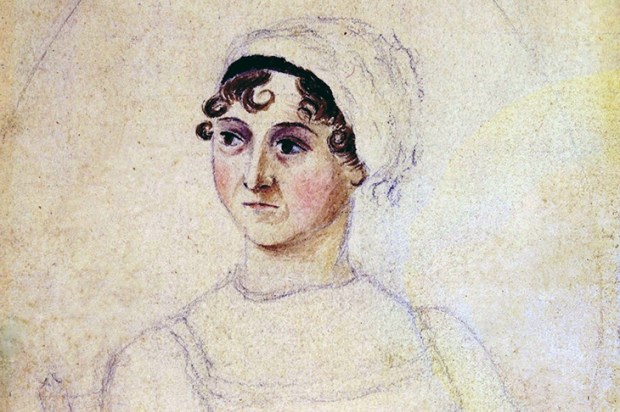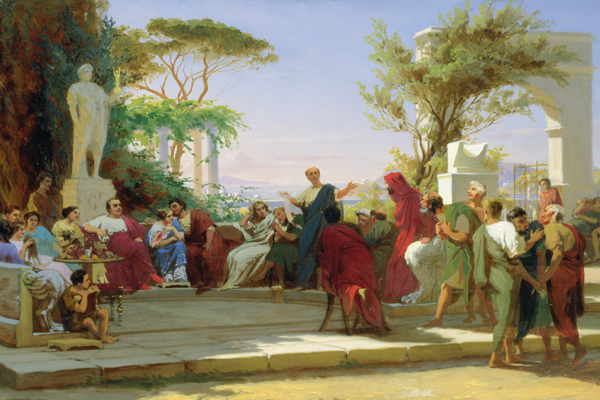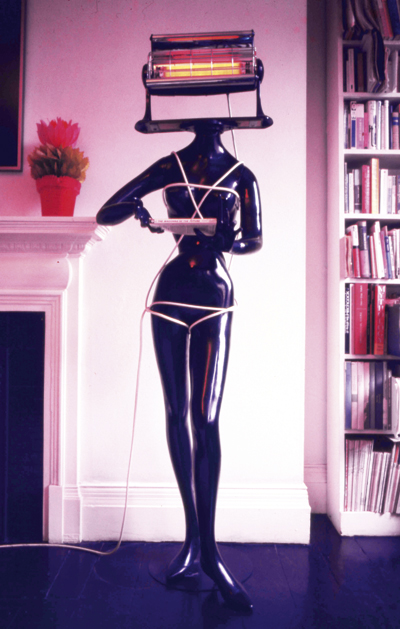The Vet’s Daughter is Barbara Comyns’s fourth and most startling novel. Written in 1959 when she was 50 it is the first in which she shows mastery of the structures of a fast-moving narrative and a consistent backdrop to the ecstasies and agonies of the human condition. It was received with excitement, widely reviewed, praised by Graham Greene, reprinted, made into a play, serialised by the BBC, and adapted as a musical (called The Clapham Wonder) by Sandy Wilson of The Boyfriend.
But although the book has been kept in print by Virago since 1981 its reputation has faded, probably because the shock of the magical realism of its final chapter has been swamped by the tsunami of fantasy and magic that has almost engulfed the later reading world in the past 20 years. The Vet’s Daughter is not about ‘enchantment’, it is about evil, the evil that can exist in the most humdrum people. Without being specifically feminist it describes the evil treatment of powerless Edwardian wives and daughters — a theme in several of her other novels — not as satire, like Stella Gibbons’ Cold Comfort Farm, not meant to be funny or portentous, but as a statement of fact.
Barbara Comyns, like Stella Gibbons, lived in a leafy London suburb for many years, though less quietly! I cannot now remember the year I met her in Twickenham. I lived in Wimbledon, and one morning I walked into the small and excellent private library on the high street where you could borrow a book for sixpence a week (ah, lost world!) and asked the erudite, formidable woman who owned it — we called her the Dong with the luminous nose — if she had any good new novels and she said: ‘Certainly not. There hasn’t been a good original English novel since The Vet’s Daughter.’ I said that I knew what she meant and she replied: ‘So you should. She lives next door to you.’
This was not true, for Barbara Comyns had moved by then to either Richmond or Twickenham. Earlier she had lived in Spain with her second husband. I find her movements as hard to track as those of her heroines and in some ways very like them: the adolescent marriages and escapes, the curious jobs, the poverty, the rescues, the bundled-up babies, the messy art school bohemianism, the fecklessness and the bravery. And the innocence.
However, the Dong had a telephone number and a young-sounding upper-class voice answered. She didn’t ask who I was but she seemed delighted and said, ‘Come to tea.’ I asked, ‘When?’ and she said, ‘Come this afternoon.’
The impetuous certainty is also like her early fictional heroines. Even in the depths of loneliness and rejection they make lightning and often very unwise decisions. They seem to stem from a perpetual curiosity, an inner observing eye that even death — and there are horrible deaths — can’t conquer.
It is hard not to believe that Barbara Comyns’s own adventures are entangled in her fiction. Sisters by a River, which she wrote for her own children, and Our Spoons Came from Woolworths read convincingly as strongly autobiographical. Ursula Holden states categorically in her introduction to Virago’s 1984 edition of ‘Sisters’, as Comyns called it, ‘The events in the book are true.’ It is about a long-ago childhood of six siblings who grow up sometimes in heaven, sometimes in hell, always in a lovely landscape, controlled by a savage father and a deaf, distracted, unfriendly mother. When, much later, she published it, it was considered very shocking, but ‘true’.
Barbara was brought up in the Warwickshire countryside. There was little in the way of education and she was told that the family were poor. In fact the house was large, there were servants (though discontented ones) and beautiful gardens. The landscapes of Sisters come into The Vet’s Daughter too but as a dream of someone else’s childhood, the heroine, Alice’s mother, who was spirited from its heaven into hell. It seems reasonable to identify this setting as Barbara Comynss’ own, but the beastliness of the father and the cruelty of the impossible mother are less so, especially as Comyns’s own children do not remember their grandparents as anything of the sort. But it is, I think, true that in all her novels there is a girl seeking sanctuary, and in some of them she finds it, often within another family in which she has been absorbed.
In The Vet’s Daughter, though, there is no such comfort. The scenery changes. The girl is taken from the countryside to the drab streets of London’s Clapham and married off to a monster. In time she tells her daughter of the fairyland world she had had to leave. Alice listens. She listens in the terrible house of her father the demon vet where creatures from the natural world are trapped and doomed. There is a sad little monkey who sits in the hearth wringing its hands (as Barbara’s mother’s fireside monkey is said to have done) and a screeching parrot inhabits the lavatory. The vivisectionist’s rep calls weekly for unwanted puppies. Mother and daughter are helpless; the vet is the demon of fairy-tale.
The sense of fairytale is never far away in Barbara Comyns. Its childhood power never quite left her. In her late novel, The Juniper Tree, she writes on the fly-leaf: ‘Adapted from a childhood fairytale of the same name by the Brothers Grimm, which is far too macabre for adult reading’ and, over the page:
My mother she killed me
My father he ate me
My sister, little Marlinchen,
Gathered my bones,
Tied them in a silken handkerchief,
Laid them beneath the juniper tree,
Kywitt, Kywitt, what a beautiful bird am I.
Whatever sort of writer was the author of such books?
When I met Barbara Comyns for tea that day in her cheerful house in Twickenham the sun was pouring in through all its bright windows. There was certainly nothing to suggest the macabre. She was merry and welcoming, and I think she was carrying a sweeping brush (when I wrote a short story about her much later I felt I had to give her a stave). She was dressed in light colours and her cheerful paintings — she seemed to think of herself as painter -rather than -writer — hung all around the hall. I knew that she had been a beauty in her youth for there is a film star-ish author photo on the back flap of one of her last, rather dull, -novels, The House of Dolls, where she looks like Vivien Leigh. The heroines in (I think) all her fiction are -obviously — though she never says so — wildly attractive and one sees that she must have been too. They also seem to be attracted to the most terrible men, of all ages.
Her second marriage seems to have put things straight. The delightfully vague-sounding -Richard Carr was a senior civil servant who worked in Whitehall.
As I was leaving, she said, ‘I expect you’ve heard that my husband was a spy? He worked in Whitehall with Kim Philby. Oh, Kim was a delightful man. So funny. Always here playing cards. Neither of us had a notion! When he disappeared — to Moscow, you know — they sacked my husband. They said that either he must have known and therefore was a traitor, or that he hadn’t spotted it and therefore must have been a fool.’
Perhaps it was after Philby that the Comyns-Carrs went to live in Spain for 18 years? One thinks of her cooking Spanish dishes — like her heroines she was an excellent cook —among the white almond trees. I feel sure that the terrible juniper tree had withered and died.
As it did, I think, at the end of The Vet’s Daughter when Alice has reached the very depths of unhappiness, and without hope of escape or recourse to prayer or divine intervention, there comes glorious new knowledge. It is not a promise that her suffering will result in an equal joy but it describes, without -reference to a deity, the rapture of acceptance, the giving of the spirit into invisible, all-powerful hands. The gratitude for life itself.
I have no intention of revealing here what happens in the final chapter.
Got something to add? Join the discussion and comment below.
Get 10 issues for just $10
Subscribe to The Spectator Australia today for the next 10 magazine issues, plus full online access, for just $10.
© Jane Gardam. The Vet’s Daughter by Barbara Comyns is published by Virago Modern Classics (£8.99).
You might disagree with half of it, but you’ll enjoy reading all of it. Try your first month for free, then just $2 a week for the remainder of your first year.













Comments
Don't miss out
Join the conversation with other Spectator Australia readers. Subscribe to leave a comment.
SUBSCRIBEAlready a subscriber? Log in